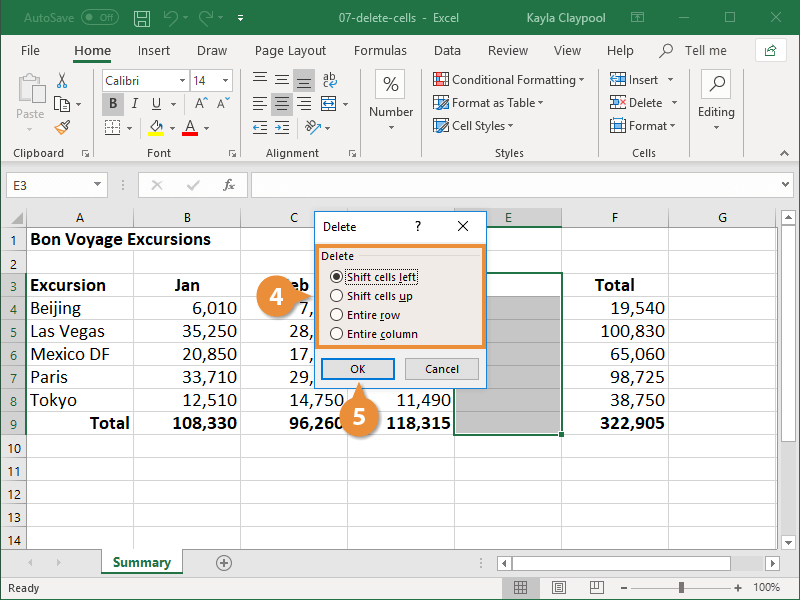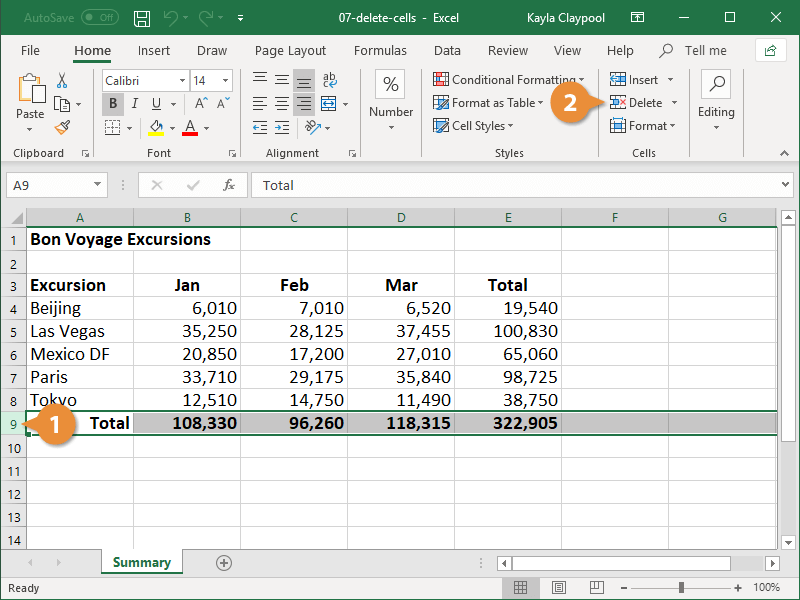If you later decide you no longer need a group of cells, columns, or rows, you can delete them. Deleting a cell differs from clearing a cell’s content, as a “hole” is created by the deleted cell(s) and adjacent cells will move to fill that hole.
- Select the cell or cell range where you want to delete.
Pressing the Delete key only clears a cell’s contents; it doesn’t delete the actual cell.
- Click the Delete list arrow.
- Select Delete Cells.
The Delete dialog box appears.
- Select how you want to move cells to fill in the deleted area:
- Shift cells right: Shift existing cells to the right.
- Shift cells down: Shift existing cells down.
- Entire row: Delete an entire row.
- Entire column: Delete an entire column.
- Click OK.
You can also delete cells by right-clicking the selected cell(s) and selecting Delete from the contextual menu.
The cell(s) are deleted and the remaining cells are shifted.
- Select the column or row you want to delete.
- Click the Delete button.
You can also delete cells by right-clicking the selected cell(s) and selecting Delete from the contextual menu.
The rows or columns are deleted. Remaining rows are shifted up, while remaining columns are shifted to the left.



